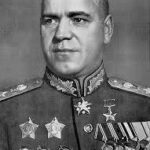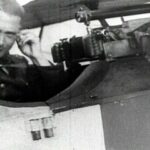How effective would the B-36 Peacemaker have been if it had been used in World War II? The B-36 Peacemaker, had it been used during World War II, would have been a formidable weapon, but its effectiveness would have been limited by several factors related to the era’s technological, logistical, and strategic conditions.
Strengths of the B-36 for WWII
Range and Payload:
The B-36 had an unparalleled range of 10,000 miles and a payload capacity of up to 86,000 pounds, far exceeding the B-29 Superfortress. This would have allowed it to strike deep into enemy territory without the need for intermediate bases, which were critical during the Pacific and European campaigns.
Altitude Performance:
The B-36 could fly at altitudes above 40,000 feet, well beyond the reach of most WWII-era fighters and anti-aircraft artillery, making it extremely hard to intercept.
Nuclear Weapon Delivery:
If the war had extended into the atomic age, the B-36 would have been an ideal platform for delivering nuclear weapons due to its ability to carry large payloads and operate over intercontinental distances.
Limitations in the WWII Context
Development Timeline:
The B-36 was designed in 1941 as a response to the potential fall of Britain, but it didn’t first fly until 1946, after the war’s end. Developing and mass-producing it during WWII would have been a significant challenge, especially given the resource constraints and urgency of the time.
Technological Compatibility:
The aircraft’s systems were advanced for their time but would have been difficult to integrate into the earlier stages of WWII. For example, maintaining its massive engines and pressurized crew compartments would have been a logistical challenge for the Allies.
Enemy Countermeasures:
While the B-36’s altitude advantage was significant, adversaries like Germany were developing advanced jet-powered interceptors (e.g., the Me 262). By late in the war, these could potentially threaten the B-36 if deployed in sufficient numbers.
Strategic Context:
WWII bombing campaigns required large numbers of bombers working in concert to achieve saturation. The B-36, with its high cost and complexity, would have been difficult to produce in the numbers needed to replace the B-17s, B-24s, and B-29s effectively.
Hypothetical Scenarios
Early in the War:
The B-36 would likely have been used sparingly due to production limitations. It might have been reserved for specialized long-range missions, such as striking deep into enemy industrial zones or attacking targets unreachable by other bombers.
Late in the War:
The B-36 would have had the greatest impact late in the war, particularly if paired with nuclear weapons or as a strategic deterrent against late-war Axis advancements.
Conclusion
While the B-36’s design was revolutionary, it was better suited to the Cold War era’s needs than to the realities of WWII. Its impact during WWII would have been limited by production challenges and the evolving nature of warfare at the time, but it could have provided the Allies with an impressive psychological and strategic edge if deployed.


